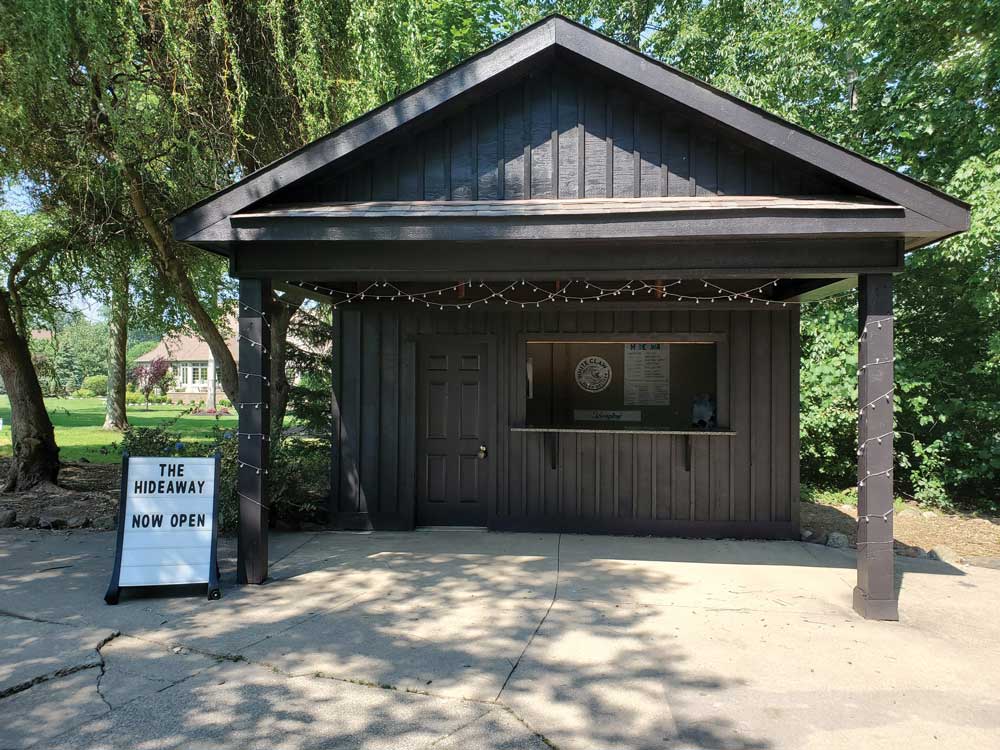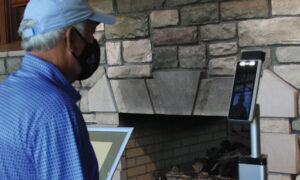Ask golfers in northeastern Ohio about Little Mountain Country Club, and they’ll tell you, “At Little Mountain, a good time is all but guaranteed.” While the course, designed by golf course architects Dr. Michael Hurdzan and Dana Fry, has been a popular public course since it opened in May 2000, upgrades in recent years have made this good place to golf even better.
Key to facilitating changes have been the thoughtful strategies of Golf Course Superintendent John Namicu and the special touches of the talented Neidus sisters, whose culinary and event expertise literally turned business around for nearby StoneWater Golf Club, a course managed under the same owner-operator group as Little Mountain. (See Golf is Booming and Dinner is Ready at StoneWater Golf Club)
The well-known quote “The devil is in the details, but so is salvation,” wasn’t spoken about the golf business. But when you consider that golf is enjoying a resurgence that appears to include the combination of better turf conditions, improved course playability, upgraded food service, enhanced ambiance, and a collective of many other distinct but critical details, the observation seems to apply perfectly to the golf course industry today.

Focusing on the Details of Basic Agronomy
When Superintendent John Namicu took charge of course maintenance at Little Mountain Country Club in August of 2018, he had private club experience under his belt. “I worked exclusively on private courses,” said Namicu, “I was a golf course superintendent at Shaker Heights Country Club for twelve years, and I worked at Sand Ridge Golf Club before it became Sand Ridge Mayfield.
“It’s a little different moving over to a public course. My crew at Little Mountain is almost entirely seasonal, and it turns over every year, more or less. We need about twenty workers in season, but often we run at about fifteen. One of the nice things is we can share some resources with the course at StoneWater. The superintendent there and I communicate, and we can help each other out. Also, I have a mechanic who is a lifesaver and an assistant superintendent who is irreplaceable.
“Mike Bertone, my mechanic, is worth his weight in gold. He can CPR any piece of turf equipment and bring it back to life. And my assistant is Mike’s son, Chris. The golf course has come a long way, and the success we’ve had is not just my success; it’s ours.
“But to be honest, I know how to grow grass only one way. I was taught in very intense situations, where the expectation levels were high. The golf course at Little Mountain was in good condition when I came here, but I knew it could be much better. We’ve worked hard to step things up. I think people have noticed and are happy about the results.”

At Little Mountain, improving playing conditions started with going back to the details of basic agronomy. “It’s been about balancing turf chemicals and getting the golf course on preventative programs,” said John. “Probably the biggest change I made was introducing hand watering as opposed to overhead watering for the golf putting surfaces. You are conserving water while getting water exactly where it is needed on the green.
“We also look at turf pesticides in terms of ‘where is our threshold?’ I am tasked with how much longevity I can get out of turf chemicals. For example, we don’t spray places I am pretty confident we’ll never see an outbreak occur. It’s not that that’s irresponsible, (to use chemicals comprehensively rather than selectively), but there’s a way that is probably better both economically and environmentally. So, I monitor temperatures. I take readings every day or so. Instead of spraying because it’s our scheduled day to spray, we spray based on the evaluation of the environmental pressures. And the golf course owners are good about giving us the flexibility that when an issue arises, we can address it and not let it compound.
“Our team is adjusting. We’re getting good at getting fast and being efficient in taking care of the details. We’ll see maybe 26,000 rounds of golf this year. Last year, we saw a surge in rounds, and we are even ahead of pace this year from last year.”
Great Food, Great Ambiance, and Attention to Details
Rebuilding food service and events from the ground up at StoneWater Golf Club, sisters Whitney, Lindsey and Kathryn Neidus transformed the golf course into a popular community hub, doubling its business in only a few years. In 2019, the same year Golf Course Superintendent John Namicu was in his first full season at the course, the three sisters joined the ownership team at Little Mountain Country Club, bringing with them the expertise and attention to detail they applied at StoneWater.
“When we got involved at Little Mountain,” said Lindsey, “we wanted to take what was already great and keep building and expanding on that while improving on areas where there were shortcomings. We’ve had to acclimate and shift and find out what fits and works at Little Mountain versus what has worked at StoneWater.
A halfway house on the course, previously used only as a restroom, was gutted and turned into a new, on-course bar called “The Hideaway.” Tucked away between holes 6 and 15, The Hideaway afforded the perfect spot for expanding food service at Little Mountain.

“Second to golf and for some people top billing over golf,” observed Kathryn, “is the 19th hole with its comradery and atmosphere. We feel like this year we’re taking some chances and hitting our stride. We felt the most important thing to really take Little Mountain to the next level was to get a well-versed executive chef on board full-time.”
With Kathryn and her team hard at work at StoneWater, there simply wouldn’t be enough hours in the day for them to take on the daily duties of Little Mountain and The Hideaway. Chef Rob Stauch, with over 20 years of experience, was hired to be the driving force for a growing food and beverage program at Little Mountain, working in conjunction with Kathryn and the StoneWater team.
“Rob is a tremendous chef, that goes without saying, but his creativity and ability to think outside the box, to build really unique experiences is what makes him extremely special and a perfect fit for Little Mountain. Little Mountain is a blank canvas, and Rob has the same mindset, to continue trying new things and to keep pushing the envelope,” said Lindsey. “You try things out, and some are home runs and some just don’t catch on. That’s the exciting stuff. We’ll never stop trying out new ideas and trying to evolve. It’s really been one of our greatest assets.
“Now, golfers are sticking around long after their rounds. Neighbors and the community, people who aren’t even golfing are coming down to enjoy the food and the ambiance, and that’s what we’ve really envisioned and have been working to build.”
Salvation in the Details
Although the game has seen two, back-to-back strong years, with a global pandemic spurring the previous mild resurgence of interest in golf into a historically robust one, some people are questioning how long the good times will last. But when you look at golf courses, such as Little Mountain Country Club, where attention to detail is changing the dynamic of the industry, you have to think that the future of golf is the brightest it has been in decades.
Linda Parker has been writing professionally since the 1980s. With clients in finance, sports, technology, change enablement, resorts, and nonprofit global initiatives, Linda helps organizations communicate their stories in meaningful ways to the people they most want to reach. She has authored, ghostwritten, or contributed to more than a dozen nonfiction books. Linda is a member of the Authors Guild and the Golf Writers Association of America. You can connect with her at linda@glindacreative.com

























